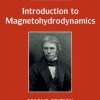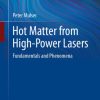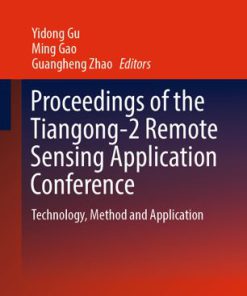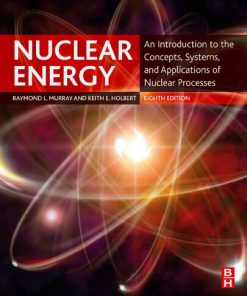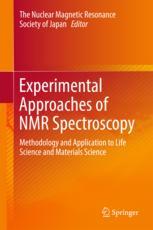Screening Constant by Unit Nuclear Charge Method Description and Application to the Photoionization of Atomic Systems 1st Edition by Ibrahima Sakho ISBN 9781786302731 978-1786302731
$50.00 Original price was: $50.00.$25.00Current price is: $25.00.
Screening Constant by Unit Nuclear Charge Method Description and Application to the Photoionization of Atomic Systems 1st Edition by Ibrahima Sakho – Ebook PDF Instant Download/Delivery: 9781786302731, 978-1786302731
Full download Screening Constant by Unit Nuclear Charge Method Description and Application to the Photoionization of Atomic Systems 1st Edition after payment
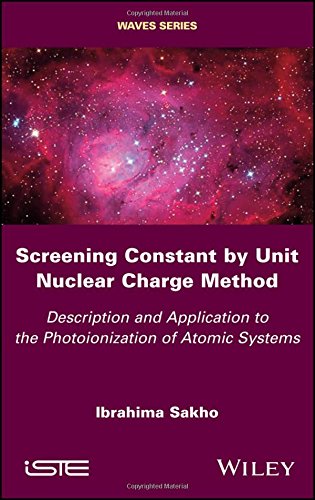
Product details:
ISBN 10: 9781786302731
ISBN 13: 978-1786302731
Author: Ibrahima Sakho
The reader will find in this collection a clear exposition of the method of the Screen Constant by Nuclear Charge Unit which can be applied in a simple and immediate way to many fields of Physics in relation to atomic spectroscopy.
Table of contents:
Part 1 1
Chapter 1. Different Photoionization Processes, Rydberg Series
1.1. Photoionization processes
1.2. Rydberg Series
Chapter 2. Experimental and Theoretical Methods of Photoionization
2.1. Experimental methods
2.2. Theoretical methods
2.3. Absolute photoionization cross-section
2.4. Analysis of resonance energies and quantum defect
Chapter 3. General Formalism of the Screening Constant by Unit Nuclear Charge Method Applied to Photoionization
3.1. Genesis of the screening constant by unit nuclear charge method
3.2. Expression of the total energy of three-electron atomic systems
3.3. General expressions of the resonance energies and widths of Rydberg series of multi-electron atomic systems
Part 2. Applications in the Calculations of Energies and Natural Widths of the Resonance States of Multi-Electron Atomic Systems
Introduction to Part 2
Chapter 4. Application to the Calculation of Energies of Two-electron Atomic Systems (Helium-like Systems)
4.1. Energy of the ground state of helium-like systems
4.2. Energy of the excited states, 1sns 1,3Se, of helium-like systems
4.3. Energy of the doubly excited symmetric states, ns2 and np2, of helium-like systems
4.4. Calculation of the resonance energies and natural widths of the Rydberg series, 2 (1,0)n1Se, of the helium atom
4.5. Effect of the nucleus on the accuracy of semi-empirical calculations
4.6. Resonance energy of the Rydberg series, 2 (1,0)n1,3P° and 2 (1,0)n−P°, of the Li+ helium-like ion
4.7. Resonance energies of the Rydberg series, 1,3Se, of the Li+ helium-like ion converging toward the excitation threshold, n = 2
4.8. Calculation of the energies of the Rydberg states, 3 (1,1)n 1P0, of helium-like systems
4.9. Physical interpretation of the angular-correlation quantum number, K
Chapter 5. Calculating the energies of Three-electron Atomic Systems (Lithium-like Systems)
5.1. Energy of the ground state of lithium-like systems
5.2. Energy of the doubly excited states, ls2snl 2L, of lithium-like systems
5.3. Energy of the doubly excited states, ls2sns 2S, of lithium-like systems
5.4. Energy of the single excitation states, 1s2nl 2L of lithium-like systems
Chapter 6. Application in the Resonant Photoionization of Atomic Systems of Atomic Numbers Z = 4–12
6.1. Resonance energies of the Rydberg series, (2pns 1P°) and (2pnd 1P°), of beryllium
6.2. Resonance energies of the excited states, 1s2p4 2,4L, of five-electron atomic systems (boron-like systems)
6.3. Energies and widths of the Rydberg series, 2pns 1,3P° and 2pnd 1,3P°, of the beryllium-like B+ ion
6.4. Energies and widths of the Rydberg series, 2pnl 1,3P°, of beryllium-like ions C2+, N3+, … and Ar14+
6.5. Resonance energies of the Rydberg series, 2s22p4 (1D2)ns, nd, 2s22p4 (1S0)ns, nd and 2s2p5 (3P2)np, of the Ne+ ion
6.6. Energies of the Rydberg series, 2s22p2 (1D)nd (2L), 2s22p2 (1S)nd (2L), 2s2p3(5S0)np (4P) and 2s22p3 (3D)np, of the F2+ ion
6.7. Energies and widths of the Rydberg series, 3pns 1,3P, 3pnd 1,3P and 3pnd 3D, of magnesium (Mg)
6.8. Energies and widths of several resonance states resulting from the photoexcitation 1s → 2p of the N3+ and N4+ ions
Chapter 7. Resonant Photoionization of Sulfur (S) and Ar+, Se+, Se2+ and Kr+ Ions
7.1. Photoionization of sulfur
7.2. Photoionization of the krypton ion (Kr+)
7.3. Photoionization of the Argon ion (Ar+)
7.4. Resonant photoionization of the selenium ions, Se+, Se2+ and Se3+
People also search for:
screening constant chemistry
screening constant and effective nuclear charge
nuclear screening test
screened nuclear charge
nuclear charge in simple terms
Tags:
Ibrahima Sakho,Screening Constant,Unit Nuclear Charge,Method Description,Application,Photoionization,Atomic Systems
You may also like…
Technique - Electronics: Microprocessor Technology
Secure Access of Performance Monitoring Unit by User Space Profilers White Paper Coll
Engineering - Electrical & Electronic Engineering
Computers - Programming
Chemistry - Analytical Chemistry


